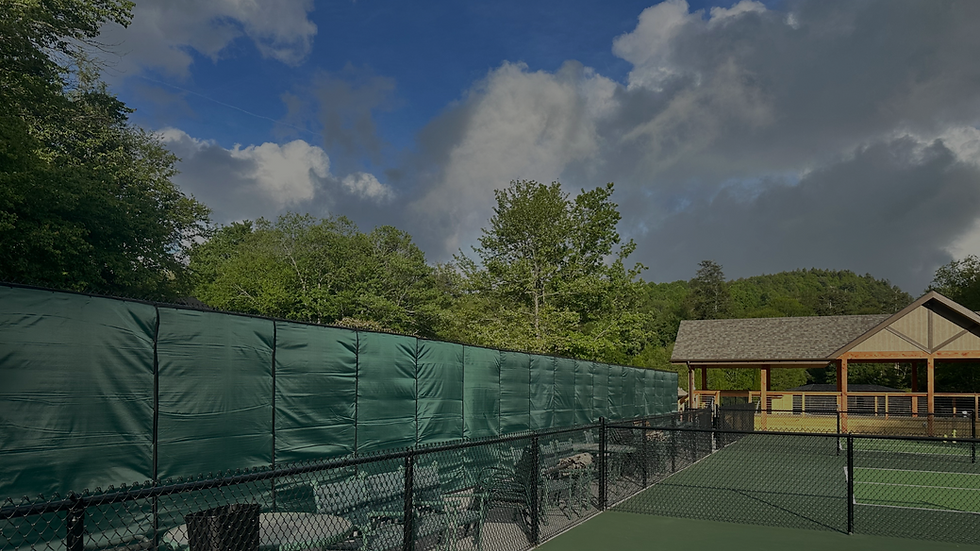Advanced Acoustical Solutions for Pickleball
- Eliot Arnold

- Sep 26
- 4 min read
When it comes to pickleball, the sound of paddles hitting the ball is part of the game’s charm. But if you’re managing a pickleball court or a sports facility, you know that noise can quickly become a challenge. The sharp pops and echoes can disturb neighbors, distract players, and even limit your court’s operating hours. That’s why I want to share some insights on advanced pickleball acoustical solutions that can transform your space into a more enjoyable and neighbor-friendly environment.
Let’s dive into how you can reduce noise effectively without compromising the fun and energy of the game.
Understanding the Noise Challenge in Pickleball Courts
Noise from pickleball courts is unique. The sound is sharp, repetitive, and can carry over long distances, especially in outdoor or semi-enclosed spaces. This noise often leads to complaints from nearby residents or other facility users.
Here’s what makes pickleball noise tricky:
High-frequency pops from paddle-ball contact.
Echoes and reverberations from hard surfaces like concrete or metal fences.
Continuous play during peak hours, increasing overall noise levels.
Addressing these issues requires more than just putting up a fence or planting trees. It calls for targeted acoustical solutions designed specifically for pickleball environments.

Why Pickleball Acoustical Solutions Matter
If you’ve ever experienced noise complaints or noticed players distracted by echoes, you know how important acoustical solutions are. These solutions don’t just reduce noise; they improve the overall player experience and help maintain good relationships with your community.
Here’s why investing in acoustical solutions is a smart move:
Enhances player focus and enjoyment by minimizing distracting sounds.
Reduces noise pollution to keep your facility compliant with local regulations.
Increases court usage flexibility by allowing play during more hours without disturbing neighbors.
Protects your investment by preventing potential legal or community issues.
One of the best ways to tackle this is by using acoustical solutions for pickleball courts that are specifically engineered to absorb and dampen sound without affecting the game’s dynamics.
Key Components of Effective Pickleball Acoustical Solutions
So, what exactly goes into an effective acoustical solution for pickleball courts? From my experience, it’s a combination of materials, design, and placement. Here are the main components to consider:
1. Sound Absorbing Panels and Barriers
Installing sound-absorbing panels around the court perimeter can significantly reduce noise reflection. These panels are made from materials like recycled rubber, foam, or specialized composites that soak up sound waves.
Place panels on fences or walls facing neighbors.
Use panels that are weather-resistant for outdoor courts.
Consider modular designs for easy installation and maintenance.
2. Acoustic Fencing
Traditional chain-link fences reflect sound, making noise worse. Acoustic fencing uses materials that block and absorb sound, such as dense vinyl or composite panels.
Acoustic fences can reduce noise by up to 50%.
They also provide privacy and improve aesthetics.
Combine with vegetation for a natural sound buffer.
3. Court Surface Treatments
Hard surfaces like concrete amplify sound. Using cushioned or rubberized court surfaces can help absorb impact noise.
Choose surfaces with built-in sound dampening.
Maintain surfaces regularly to avoid cracks that increase noise.
4. Strategic Landscaping
While not a standalone solution, landscaping can complement acoustical treatments.
Plant dense shrubs or trees around the court.
Use berms or earth mounds to block sound paths.

Practical Steps to Implement Acoustical Solutions
If you’re ready to improve your pickleball court’s acoustics, here’s a step-by-step approach that I recommend:
Conduct a Noise Assessment
Measure current noise levels during peak play times. Identify the main sources and directions of sound.
Consult with Acoustical Experts
Work with professionals who understand sports noise dynamics. They can recommend tailored solutions.
Select Appropriate Materials
Choose panels, fences, and surfaces designed for outdoor sports environments.
Plan Installation Carefully
Position sound-absorbing materials where they’ll have the most impact, such as facing residential areas.
Combine Solutions for Best Results
Use a mix of acoustic fencing, panels, and landscaping for comprehensive noise control.
Monitor and Adjust
After installation, keep track of noise levels and player feedback. Make adjustments as needed.
By following these steps, you’ll create a more pleasant environment for players and neighbors alike.
The Future of Pickleball Noise Management
As pickleball continues to grow in popularity, noise management will become even more critical. Innovations in materials and design are making acoustical solutions more effective and affordable.
Some exciting trends include:
Smart acoustic panels that adapt to noise levels.
Eco-friendly materials made from recycled products.
Integrated sound monitoring systems for real-time noise control.
Facilities that adopt these advanced solutions will stand out as leaders in player experience and community responsibility. Taking the Next Step for Your Pickleball Court
If you’re looking to reduce noise and improve your pickleball court, I encourage you to explore the latest acoustical solutions for pickleball courts. These technologies are designed to balance sound control with the vibrant energy of the game.
Remember, effective noise management is not just about compliance - it’s about creating a welcoming space where players can focus, enjoy, and keep coming back. With the right approach, you can turn your court into a model of sound-friendly recreation.
Feel free to reach out to experts, gather feedback from your players, and invest in solutions that make a real difference. Your court - and your community - will thank you for it.



Comments